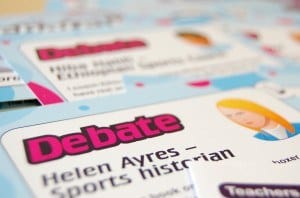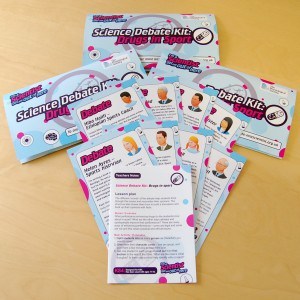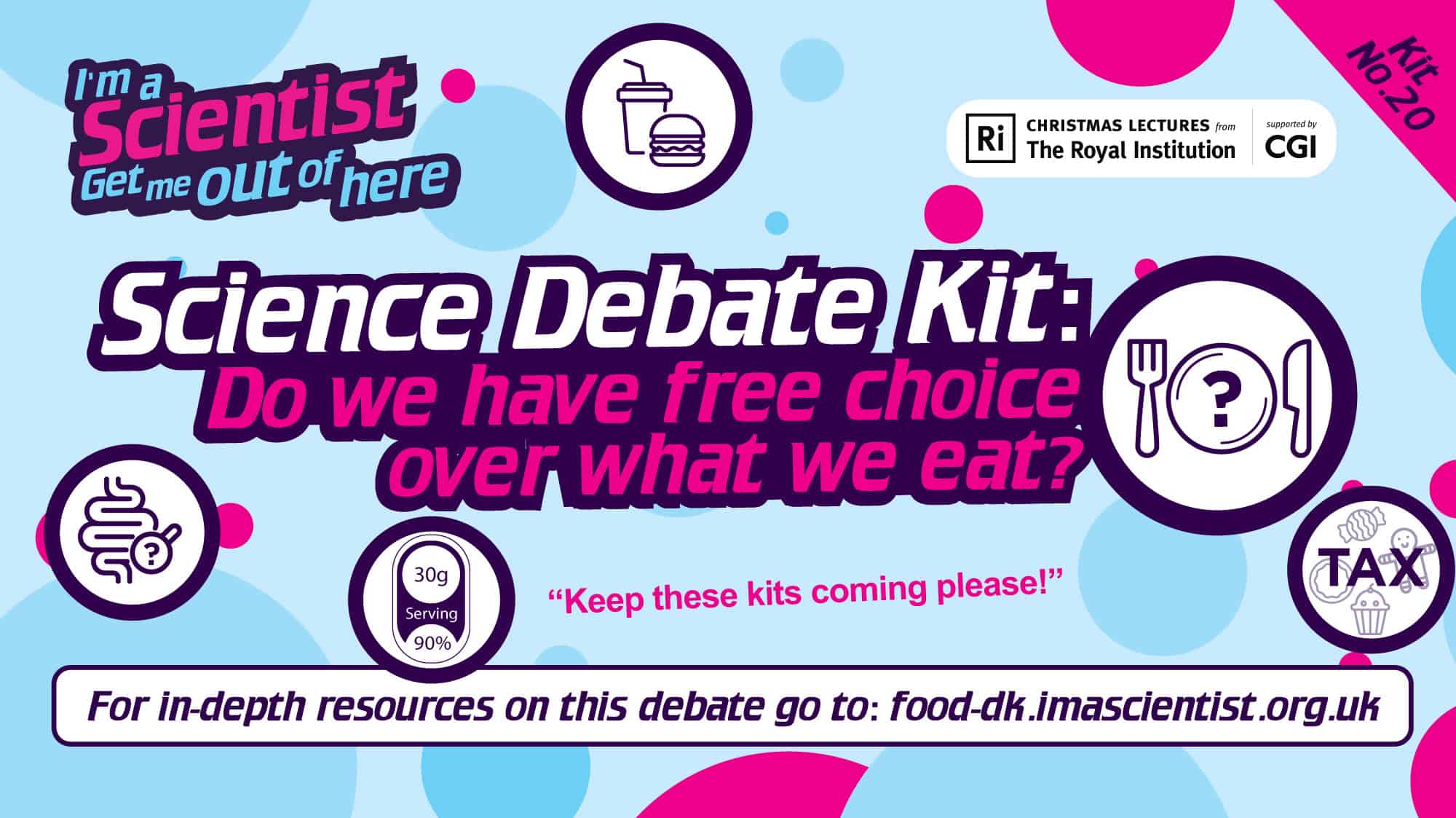 Doping in sport usually means the use of performance-enhancing drugs, but is can also mean techniques like ‘blood-doping’.
Doping in sport usually means the use of performance-enhancing drugs, but is can also mean techniques like ‘blood-doping’.
“Drugs in Sport” the fifth in the series of free I’m a Scientist Debate Kits explores the ethical issues around the use of drugs in sport such as possible harm to the athlete and unfairness.
This set of 8 characters will get students exploring the differences between different types of drugs and discussing their effect compared with non-drug techniques of improving performance.
To get your free copy of Drugs in Sport fill in the form and we’ll send you one in the post (UK and Republic of Ireland only).
What is a Debate Kit?
The thinking behind the kits is that, for very sound reasons, the post-2006 GCSE curriculum calls for far more debate and discussion in science. However, simple-to-use and effective resources to support this are lacking. As it’s a relatively new requirement, many teachers feel unequipped to facilitate discussions and told us that students often lack the skills they need.
These kits are designed to plug that gap. They give a teacher everything they need to run a debate on a set topic and help their students develop their discussion skills. The activity provides a structured way to start discussions and gets the students engaged in thinking about contentious science issues. Using eight characters, with different points of view, allows us to introduce issues from many different angles – ethical, social, economic, political. Young people consider and weigh up these questions in an integrated way.
Do they work?
 We think so. The School Science Review seems to think so. 98% of teachers who responded said they would recommend the kits to a colleague.
We think so. The School Science Review seems to think so. 98% of teachers who responded said they would recommend the kits to a colleague.
The kits are simple to use. We have produced a clear 50 minute lesson plan to be used with secondary school students of any age. The character cards are structured to help students develop on position on the question posed over time without leaping to an immediate conclusion.
Sign up to receive your free copy and find out for yourself.
 How can you send these out for free?
How can you send these out for free?
Drugs in Sport is sponsored by The Physiological Society. Through its educational website, www.understanding-life.org. The Society provides interactive resources and competitions to enhance physiology teaching at ages 11-19 as well as information on physiology-related careers. Bringing together over 3,000 scientists from more than 60 countries, The Society also offers schools the opportunity to engage with scientists online, in the classroom or at universities. For further information, please email education@physoc.org.
We are also very grateful for the knowledge and advice given generously by Dr Charlotte Haigh and Dr Dave Lewis of the Faculty of Biological Sciences, University of Leeds.


I signed up for a drugs debating kit, but I am not sure if it registered
If you’d like to leave a comment here, thank you. We will not make them public to protect your privacy.
Hi,
I would like to share with you how I have used the kit with Year 6 children by adapting the procedure.
I have looked for where to upload the results but could not find link.
Please let me know what you think.
19th April 2012
Drugs use debate
LO: I can put my opinion forward about drugs use in sports.
What to do
1. In your pair or group, take it in turns to read out sections of character card.
2. Decide who will read the first part of the card out loud to class
3. This person comes out to the middle of the class to read the section.
4. Every character has read their information; Child x will ask you to vote on the side you take.
5. After the voting, people who have not read will now read the fact, issue and question for your character.
6. Back in your group, complete the starter sentence on your view by your self – 5 minutes
7. When you have all finished, read out each person’s sentence and combine your group views as one that your group will share with the rest of the class.
8. Each group to read out their composed sentence/s. Choose one person or a pair to do so.
9. After each person has read, Teacher will summarise the main points.
10. Child x will ask the class to vote again.
11. The motion will be decided from the vote.
Voting results:
Before lesson:
Number for: 24
Number against: 0
Number abstained: 0
After character background information:
Number for: 18
Number against: 6
Number abstained: 0
After character facts and issue and group discussions:
Number for: 8
Number against: 13
Number abstained: 3
This shows a shift in view after children have had time to consider more facts and individual circumstances.
Hi Fidelia,
Apologies for the delay in replying. I just wanted to say a very big thank you for your comment. It is wonderful to get such detailed feedback and to hear the voting results at each stage. It’s a fabulous case study. Would you mind if we republished this as a post on the site and included it in our evaluation report? If you had any pictures of the class using the kit that would be the icing on the cake.
Hi Shane,
I do not mind you republishing it or including it in your evaluation report. Unfortunately, I do not have any photographs for this particular debate but next time I do the activities again, I will take photographs.
Best wishes.